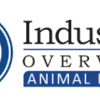Recent Posts
- Cultivating A Champion Culture: Balancing Performance and People in Animal Health
- How Stable are Earnings in Animal Health? Results of the Animal Health Jobs 2025 Salary Survey
- Entry Fees for the Race for Talent: Results of the Animal Health Jobs 2025 Salary Survey
- Looking In The Gift Horse’s Mouth: The Pros and Cons of Counteroffers in Animal Health
- Beyond the Hire: Why Animal Health Needs More "Relationshipping," and Less Recruiting
Most Popular
-

Entry Fees for the Race for Talent: Results of the Animal Health Jobs 2025 Salary Survey
-

News to Know from Brakke Consulting’s 2025 Animal Health Industry Overview
-

How Stable are Earnings in Animal Health? Results of the Animal Health Jobs 2025 Salary Survey
-

Cultivating A Champion Culture: Balancing Performance and People in Animal Health
-

Jumping the Fence: When Should You Quit Your Job in Animal Health?
How Stable are Earnings in Animal Health? Results of the Animal Health Jobs 2025 Salary Survey

The first Animal Health Jobs Salary Survey was conducted in 2021, following the peak of the COVID pandemic and its dramatic impacts on the industry, particularly on veterinary practices.1 Five years later, our follow-up survey reveals key insights about how employee compensation in the animal health industry has progressed.
Calm waters
Cash compensation, including salary, bonuses, and (where appropriate) overtime, remained relatively stable for both full and part time employees, increasing approximately 4% since 2021.1 The mean compensation of all full-time employees is $116,000, and that of all part-time employees is $49,000.
Veterinary technicians can achieve a substantial increase in compensation by transtioning to industry. The Bureau of Labor Statistics reports that the average credentialed veterinary technician (CVT) salary was $45,980 in 20242. CVTs are well-suited to be animal health sales professionals; in this role, the mean salary is $121,470 - a jump of more than 250%. This significant change in potential earnings helps explain why so many CVTs have moved to industry.
Benefits gap
Stress and burnout are now major topics of discussion in animal health.3,4 Those with jobs in industry are more likely to receive benefits that support work-life balance than are their counterparts in clinical practice. The four most common benefits reported were 401(k) or 401(k) contributions, maternity/paternity leave, flexible work hours or schedules, and mental health coverage. All were far more common in industry than in practice. In fact, clinical practice is less likely to offer its employees any of the top 10 corporate benefits, with the exceptions of professional development support, meals or snacks, and a commuting allowance.
Office? What office?
Consistent with our 2022 Attitudinal Survey, 80.5% of industry employees now work remotely at least part of the time.5 Hybrid or remote working has become standard in the industry, expanding beyond sales professionals or technical services experts. Most employees (83%) do not believe that remote working negatively impacts their chances for promotion. However, 18.6% are either concerned that working remotely reduces their career prospects, or unsure of what the impact will be. Managers must actively ease their concerns by communicating honestly about any potential impact.
Steady as she goes
The animal health industry remains a stable one, continuing to attract people who are passionate about helping animals. Salaries were not dramatically impacted by COVID-19. Corporate employment continues to offer advantages over clinical practice, particularly regarding benefits and the option to work remotely. To remain competitive, animal health employers should offer competitive compensation and flexible work arrangements to attract and retain top talent. Clinical practices should review their compensation policies and offer candidates benefits that more closely match those in industry offers, where possible, to keep their best employees in the clinic.
Download the complete report on the Animal Health Jobs 2025 Salary Survey here to find out all of the details
---
Animal Health Jobs connects the most knowledgeable job candidates and the top animal health companies. Find experienced animal health insiders who understand the animal health industry and can bring your business to the next level of success. Post your open roles now to find the top candidates in animal health and animal nutrition. Looking for a new position yourself? Post your resume and find your next great position!
Register for our newsletter to stay on top of the latest jobs and trends in animal health and animal nutrition.
References
- Counting our Chickens: Animal Health Jobs Survey of Compensation Summer 2021. Published 23 December, 2021. https://animalhealthjobs.com/blog/3222/counting-our-chickens.
- Bureau of Labor Statistics. Occupational Outlook Handbook. Veterinary Technologists and Technicians. Accessed 24 April 2025. https://www.bls.gov/ooh/healthcare/veterinary-technologists-and-technicians.htm
- Volk, J. O., Schimmack, U., Strand, E. B., Reinhard, A., Hahn, J., Andrews, J., Probyn-Smith, K. & Jones, R. (2024). Merck Animal Health Veterinary Team study reveals factors associated with well-being, burnout, and mental health among nonveterinarian practice team members. Journal of the American Veterinary Medical Association, 262(10), 1330-1337.
- Volk, J. O., Schimmack, U., Strand, E. B., Reinhard, A., Hahn, J., Andrews, J., Probyn-Smith, K., & Jones, R. (2024). Work-life balance is essential to reducing burnout, improving well-being. Journal of the American Veterinary Medical Association, 262(7), 950–957. https://doi.org/10.2460/javma.24.02.0135
- Animal Health Jobs Spring 2022 Candidate Attitudinal Survey. Published 13 May, 2022. https://animalhealthjobs.com/blog/3865/animal-health-jobs-spring-2022-candidate-attitudinal-survey

Comments